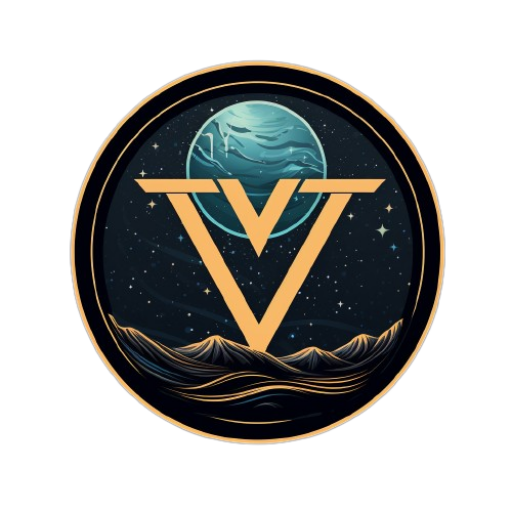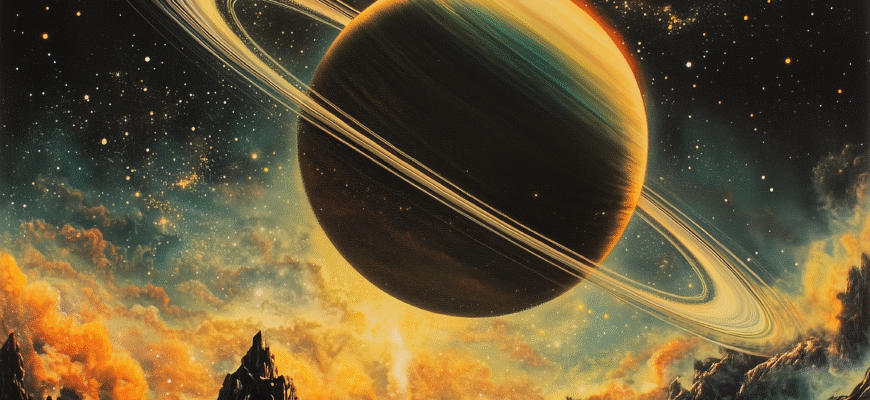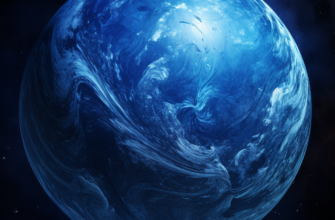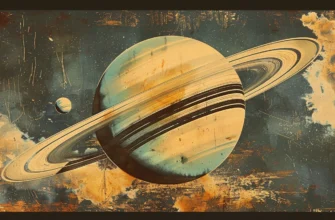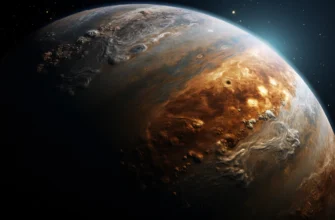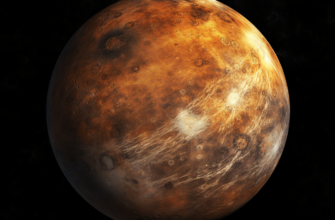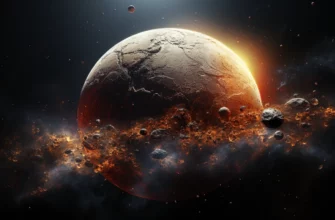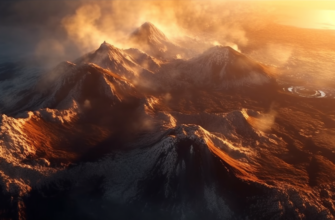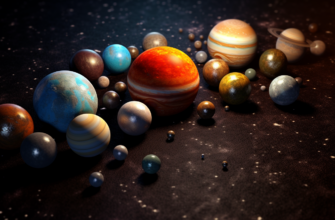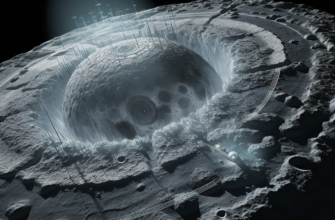- Overview: Why Saturn is a Fascinating Planet
- Why Saturn is Important
- The Discovery and Observation of Saturn
- Early Astronomical Observations
- Key Milestones in Saturn’s Observation:
- Modern Discoveries
- Saturn’s Place in the Solar System
- Position and Orbit
- Saturn’s Rotation and Axis Tilt
- Saturn’s Atmosphere: A Gas Giant’s Unique Composition
- Atmospheric Composition
- Key Atmospheric Phenomena on Saturn:
- Weather Patterns on Saturn
- The Famous Rings of Saturn
- Structure and Composition
- How Were Saturn’s Rings Formed?
- Saturn’s Moons: A Diverse Collection
- Titan: Saturn’s Largest Moon
- Key Facts About Titan:
- Enceladus: The Icy Moon with Ocean Beneath
- Highlights of Enceladus:
Overview: Why Saturn is a Fascinating Planet
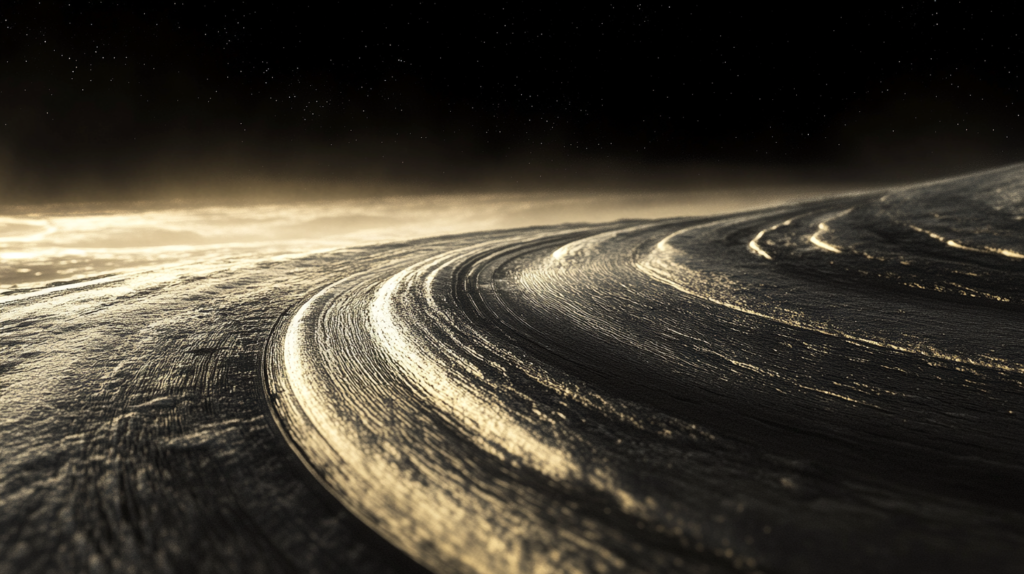
Saturn ranks among the most strikingly beautiful and thrilling planets within our Solar System; it is the sixth from the Sun. For years, Saturn has remained one of the continuously enchanting scientific and public imaginations due to its elaborate system of rings. Anything can enchant one with this gas giant, from the astounding size to the innumerable moons, to current dynamic weather systems.
Greatness had always caught the eye of Saturn. Even though it is far from Earth, it can be seen with the naked eye, shining so bright in the night sky. It wasn’t until the invention of the telescope, though, that we truly began to appreciate the complex beauty of Saturn.
Why Saturn is Important
- Scientific Value: Studying Saturn provides insights into the formation and evolution of gas giants and their role in planetary systems.
- Aesthetic Value: The breathtaking view of the rings of Saturn is something unparalleled in our Solar System.
- The astrobiological potential-software might take advantage of the conditions on its moons, like Titan and Enceladus.
In this detailed tour of Saturn, we’ll discuss not only its many layers-from the enormous gaseous atmosphere to the magnificent rings-but also the dozens of moons in orbit around the planet.
The Discovery and Observation of Saturn
Early Astronomical Observations
Saturn has been known to humans for thousands of years. Ancient civilizations from the Babylonians to the Romans wrote about the planet and its strange motion across the night sky. It wasn’t until Galileo Galilei turned his telescope toward Saturn in 1610 that the planet began to give up its secrets.
Galileo felt that he had observed two large moons, one on either side of Saturn. He wrote that Saturn appeared to have “ears,” which was an inexplicable observation given that no other planet appeared in that way. We now know that these “ears” were actually the rings of Saturn but that the crudity of Galileo’s telescope could not resolve them in their full clarity.
Key Milestones in Saturn’s Observation:
- 1610: Galileo’s discovery of Saturn’s peculiar “ears”.
- 1655: Dutch astronomer Christiaan Huygens correctly identified that Saturn was surrounded by rings.
- 1675: Giovanni Cassini discovered the division in Saturn’s rings, now known as the Cassini Division.
Modern Discoveries
From that little dot in the sky, Saturn had come a long way at the dawn of space exploration and became one of the most studied planets. With the space mission Pioneer 11 and Cassini, the scientists received detailed images and data that disclosed new mysteries regarding the rings, atmosphere, and moons of Saturn.
Perhaps the most groundbreaking Cassini-Huygens mission launched in 1997, arriving at Saturn in 2004, sending back images and highly valued scientific information until its mission ended in 2017.
Saturn’s Place in the Solar System
Saturn is the sixth in order from the Sun and the second biggest in the Solar System after Jupiter. This being a gas giant means that it contains no solid surface but is composed mainly of hydrogen and helium, just like the Sun.
Position and Orbit
Saturn orbits at an average distance of about 1.4 billion kilometers, 886 million miles, from the Sun-or roughly 9.5 astronomical units (AU). Because of its huge distance from the Sun, Saturn’s orbital period is equally long, taking approximately 29.5 Earth years to complete one orbit around the Sun.
| Planet | Distance from Sun (AU) | Orbital Period (Earth Years) |
| Earth | 1 | 1 |
| Jupiter | 5.2 | 11.9 |
| Saturn | 9.5 | 29.5 |
| Uranus | 19.8 | 84 |
| Neptune | 30.1 | 165 |
Saturn’s Rotation and Axis Tilt
Saturn has some exciting information in regard to its rotation. It whirls on its axis approximately every 10.7 hours, which in fact makes it the fastest rotating planet in the Solar System. This abrupt twist leads to Saturn’s oblate shape, which means that the planet appears to be flattened at the poles and bowed at the equator.
Besides, Saturn’s axial tilt is 26.7 degrees, which is quite close to the Earth’s tilt of 23.5 degrees. That is to say, this tilt of Saturn helps it to feel the seasons just like the Earth, but at the same time, a whole Saturn’s year is approximately equal to 7 years of the Earth due to a longer orbital period of Saturn.
Saturn’s Atmosphere: A Gas Giant’s Unique Composition
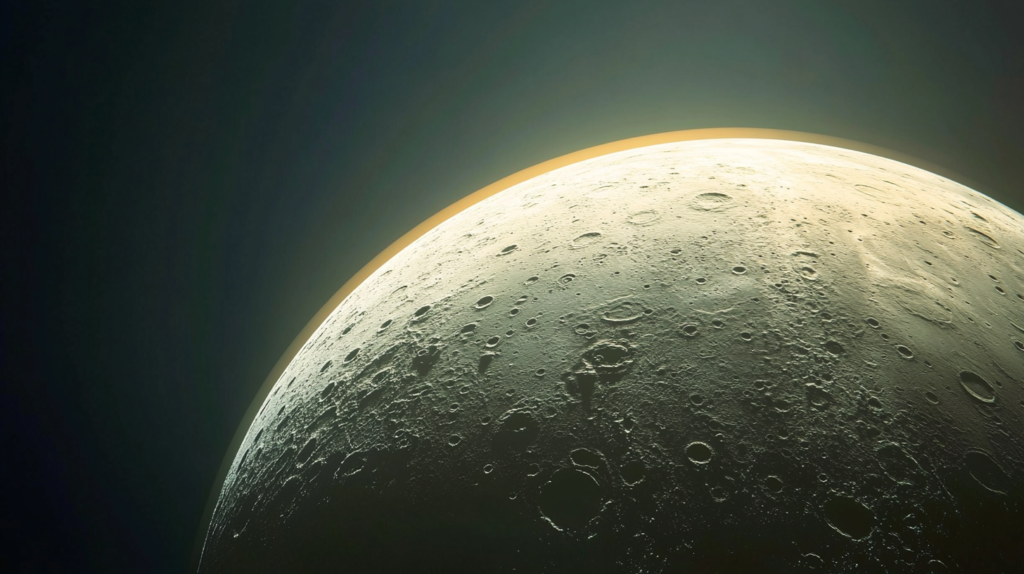
Saturn’s atmosphere, as much as 96% of it is hydrogen and around 3% is helium, and some of the other gases are a little methane, ammonia, and others. As with Jupiter, Saturn’s atmosphere consists of clouds that look like belts passing at high speeds of different sides, thus forming stormy weather.
Atmospheric Composition
| Gas | Percentage |
| Hydrogen | 96% |
| Helium | 3% |
| Methane | <1% |
| Ammonia | Trace |
The Saturn atmosphere is primarily recognized for its hexagonal storm that occupies the pole of the planet. Such a bizarre meteorological event happens as a hexagonally structured jet stream, which can travel reaches a length of thirty thousand kilometers a distance which is a little bigger than the Earth itself.
Key Atmospheric Phenomena on Saturn:
- Hexagonal Storm: A persistent, hexagonal cloud pattern at Saturn’s north pole.
- Great White Spot: A massive, planet-encircling storm that occurs approximately every 30 Earth years.
- Auroras: It also have some beautiful auroras, like the northern and southern lights on Earth, as its magnetic field interacts with solar winds.
Weather Patterns on Saturn
Saturn has some of the most severe weather conditions in the Solar System. The wind rate on the planet is so high that some can even reach up to 1,800 kilometers per hour which is much more than the highest speed of hurricanes on Earth. In spite of the fact that Saturn is very far from the Sun, it has very strong storms and leading mainly in the equatorial regions.
The Famous Rings of Saturn
Perhaps the most iconic feature of Saturn is its rings. Composed primarily of ice particles, dust, and rocky debris, the rings extend thousands of kilometers into space, yet are incredibly thin—only about 20 meters (66 feet) thick on average.
Structure and Composition
Saturn’s ring system is divided into seven main groups of rings, named alphabetically in the order they were discovered:
| Ring Group | Distance from Saturn (km) | Description |
| D Ring | 66,900 – 74,510 | Faint innermost ring |
| C Ring | 74,658 – 92,000 | Moderately transparent |
| B Ring | 92,000 – 117,580 | Brightest and most massive |
| A Ring | 122,170 – 136,775 | Outermost large, bright ring |
| F Ring | 140,180 | Thin and faint with clumps |
| G Ring | 166,000 | Faint and diffuse |
| E Ring | 180,000 – 480,000 | Very wide, faint, and icy |
How Were Saturn’s Rings Formed?
The concept of the rings in the early solar system as a stray substance which managed to survive the protostar process that produced more massive entities is one more idea.
Saturn’s Moons: A Diverse Collection
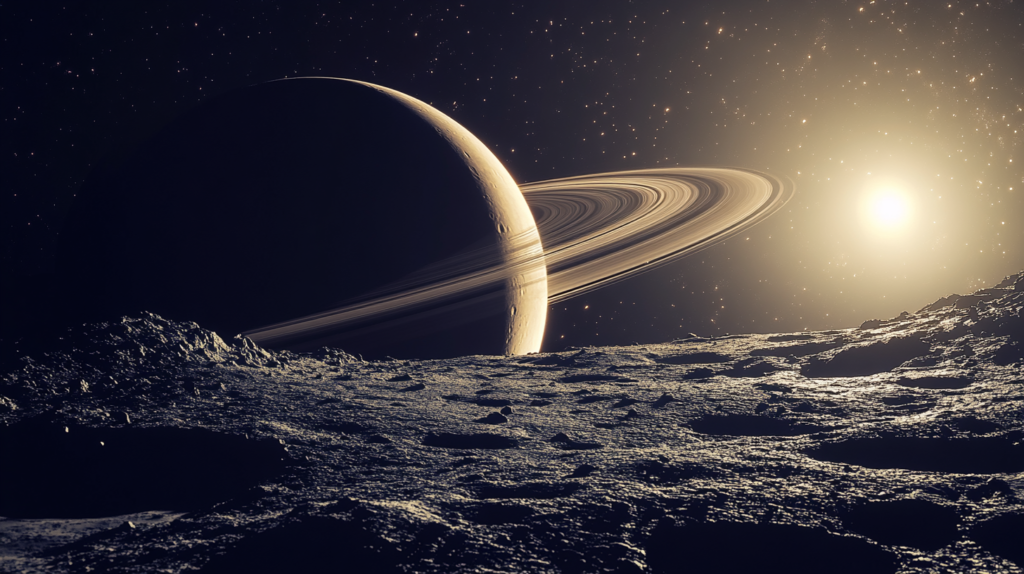
The planet has many moons, a total of 145. They are of various sizes, compositions, and other characteristics. The smaller moons are just a few kilometers in size while the biggest ones are the ones with an earth-like atmosphere.
Titan: Saturn’s Largest Moon
Titan, the largest satellite of Saturn, is like a planet in itself.
Larger than Mercury, Titan has a dense atmosphere that is mostly made of
nitrogen, and landforms are lakes with the presence of ethane and
methane.
Key Facts About Titan:
- Diameter: 5,150 kilometers (3,200 miles)
- Atmosphere: Nitrogen (98%), with methane and other trace gases
- Surface: Liquid hydrocarbon lakes, ice mountains, and a dense haze
Enceladus, another (the other) moon that we cannot ignore, is owned by NASA. This moon is a very interesting object because its surface is composed practically of ice. The most unbelievable thing with respect to Enceladus is the detection of water fountains on its south pole. The color spectrum of the liquid plumes displays the presence of organic matter confirming a subsurface ocean that might be a habitat to life.
Enceladus: The Icy Moon with Ocean Beneath
Enceladuc, back the flat moon, is Jackie Space and along the ground entirely ice is produced by only one pollen. A feature of who Interspace (Web. girl.uk) is the combustion date of the water flumes erupting from the injection in the south pole. The flumes themselves contain organic molecules thus indicating that the inside of the celestial body might be hosting life.
Highlights of Enceladus:
- Diameter: 504 kilometers (313 miles)
- Surface: Icy, with active geysers
- Subsurface Ocean: Potential habitat for microbial life
Enceladus came directly from the potential moon list. It was clear that it was made almost completely of ice. It is a significant thing that was Enceladus that water was discovered that sometimes over the very south pole. Those fountains are the flow of organic matter like molecules that cause the water to look colorful the proof that a below the surface ocean exists and life symbolizes the existence of the substance.
